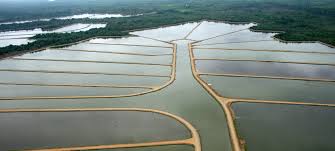Government Grants
Business Grants
Home Owner Programs
Federal Programs
About Us
Cooperative Agreement for CESU-affiliated Partner with Great Plains Cooperative Ecosystem Studies Unit
The US Geological Survey is offering a funding opportunity to a CESU partner for research in spatio-temporal dynamics of the Upper Mississippi River System (UMRS).
Previous studies suggest that several water quality attributes are related to the distributing of different aquatic habitats, and that aquatic vegetation, mussel, and fish communities are related to spatial variability in aquatic habitats and water quality attributes in different ways and over different spatial scales.
However, these studies have almost universally taken a species or community centric view of the river, asking questions such as ‘what factors influence the distribution and abundance of a given community’? Seek a collaborator who can take fundamentally different approach to the study of physical-biological relationships and to understand the landscape mosaic of a large river and address the question of ‘what are the physical properties of the riverscape that can model and map that are most important in structuring biological communities?’ This perspective acknowledges that biological communities vary over space and time, responding to both physical and biological factors, many of which are impossible to map over large spatial scales.
Hence, the purpose of the study is not to understand the ‘controls’ on various biotic communities, but rather to identify and quantify aspects of the riverscape that play important roles in structuring biotic communities.
Management agencies continue to manipulate physical variables to manage and restore various biotic communities.
Furthermore, anticipate changes in the abundance and distribution of mappable aquatic areas under future climate changes.
What are the likely consequences of such changes to the biotic communities?
Previous studies suggest that several water quality attributes are related to the distributing of different aquatic habitats, and that aquatic vegetation, mussel, and fish communities are related to spatial variability in aquatic habitats and water quality attributes in different ways and over different spatial scales.
However, these studies have almost universally taken a species or community centric view of the river, asking questions such as ‘what factors influence the distribution and abundance of a given community’? Seek a collaborator who can take fundamentally different approach to the study of physical-biological relationships and to understand the landscape mosaic of a large river and address the question of ‘what are the physical properties of the riverscape that can model and map that are most important in structuring biological communities?’ This perspective acknowledges that biological communities vary over space and time, responding to both physical and biological factors, many of which are impossible to map over large spatial scales.
Hence, the purpose of the study is not to understand the ‘controls’ on various biotic communities, but rather to identify and quantify aspects of the riverscape that play important roles in structuring biotic communities.
Management agencies continue to manipulate physical variables to manage and restore various biotic communities.
Furthermore, anticipate changes in the abundance and distribution of mappable aquatic areas under future climate changes.
What are the likely consequences of such changes to the biotic communities?
Relevant Nonprofit Program Categories
Obtain Full Opportunity Text:
https://grants.nih.gov/grants/guide/pa-files/PAR-24-199.html
Additional Information of Eligibility:
This financial assistance opportunity is being issued under a Cooperative Ecosystem Studies Unit (CESU) Program.
CESU’s are partnerships that provide research, technical assistance, and education.
Eligible recipients must be a participating partner of the Great Plains Cooperative Ecosystem Studies Unit (CESU) Program.
Full Opportunity Web Address:
http://grants.nih.gov/grants/guide/pa-files/PAR-24-199.html
Contact:
Agency Email Description:
fgraves@usgs.gov
Agency Email:
Date Posted:
2024-06-05
Application Due Date:
Archive Date:
2026-10-20
Social Entrepreneurship
Spotlight
When it Comes to Social Enterprises, Failure is the Best Platform for Innovation

In the world of social enterprises, failure is a cringe-worthy moment nobody wants to talk about. But, social entrepreneurs can benefit from their failures.

